|
|
Post by okla on Apr 25, 2011 23:27:33 GMT 8
Hey Fots...Just wanted to thank you again for this latest, and among the best, "fixes". It certainly kick started the analyzing process for us "geeks". I spend, literally hours, going over the material that you and others place on this forum. Makes my, so called, "Golden Years" more "Golden". I was re-reading your opening remarks and was struck by what you said and reminded how true it is that the majority of folks don't have an inkling about the Navy Intercept Complex and what an extremely critical part it played during that time. That small acreage was the most important point in the whole Pacific Sector for the period 1939-42. As you said, what might have happened at Coral Sea, Midway,etc had we been attempting to operate without the benefit of the info gleaned by the guys down in the depths of CAST??? Pearl Harbor, with better analysis of this information, may well have turned out differently or, maybe, never happened at all. It is rather depressing, to me, to think that most folks who visit Corregidor (and most of those who don't make the tour) have no inkling that the "real" story of the "Rock" ain't the "Big Guns", which actually played only a small role in the defense of the island (Battery Way being the exception, I suppose).. It's, in reality, the saga of the
grunts" who were fighting out on the Tail, repelling the initial Japanese landing efforts, fighting up on Denver/Water Tank Hill, futilly firing at Japanese aircraft that were usually out of range, and lastly, but damned sure not "leastly", the Navy personnel, sweating over the multitude of intercepts down in the CAST Complex. There, certainly, should be some type of monument/memorial placed near the South Shore Road telling the story of CAST. Those guys rate a bit more, on site, recognition that now is not the case. I will now descend from my soapbox and go back into those tunnels till lunchtime. I say, again, you do great work prowling around in the musty,dark, murky, spider, snake, bat, infested depths. It's good that you have EXO,Karl and others to drag you out and vice versa. Cheers and thanks again for feeding my "habit".
|
|
|
|
Post by fots2 on Apr 26, 2011 9:07:23 GMT 8
Hi okla,
I am normally one who thinks the battlefield called Corregidor does not need any more memorials but in this case I totally agree with you. A roadside monument near the tunnel would not be out of place at all.
|
|
|
|
Post by Karl Welteke on Apr 26, 2011 17:01:43 GMT 8
Fots, you do darn, great, outstanding, work, thanks. Also thanks to ‘okla’ for his many hours of writing, his theories and ‘chadhill’ doing his great detective work. Glad to know you all.
|
|
|
|
Post by okla on Apr 26, 2011 21:49:53 GMT 8
Hey Karl...Thanks so much for the kind words. I truly believe if I lived to be a hundred and fifty, that my mind will always be boggled by the fact that beneath that lush, green canopy now covering Corregidor, there lies a charred, moonscape, where so much suffering, destruction and heroism took place. Another one of those places where ghosts literally "walk at mid-day". Again, I say thank you to you "on site" guys who bring it home to me way back here in the Oklahoma Badlands. Cheers.
|
|
|
|
Post by chadhill on Apr 27, 2011 0:23:34 GMT 8
A few more thoughts at large. Here's a repost of the 1945 photo after the explosion. 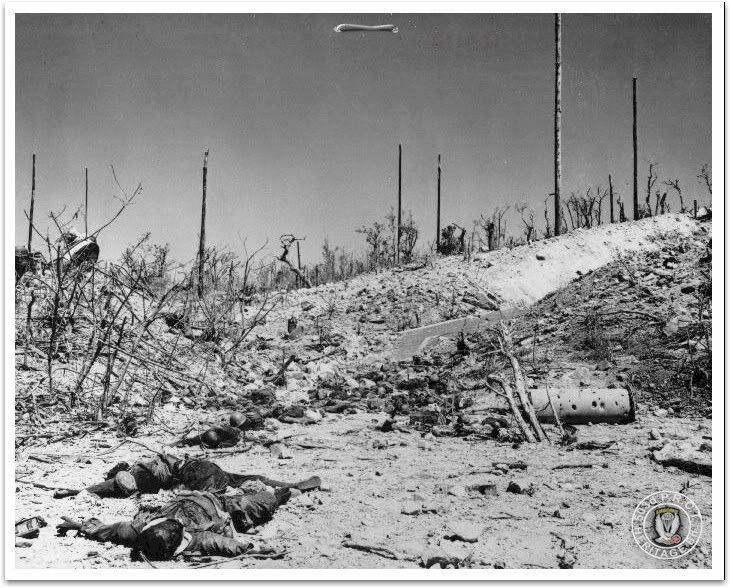 It could be that I've stared at these photos so long I'm seeing pink elephants, but near the center of the picture, behind the leaning tree trunk, there may be an antenna fixed on top of a rectangular shaped building. 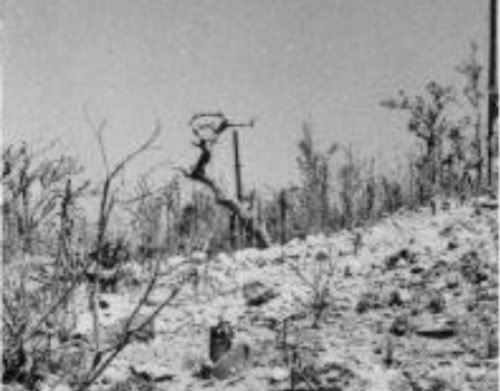 Although the antenna is more extended (was it adjustable?) what I'm seeing appears to resemble the DY and DT HFDF direction finding units that were further east of Monkey Point in 1942 (see the third map at the top of this thread, from "Intercept Station C"). The DY and DT units were portable. Here is a photo of a typical unit. Also see similar photo in "Intercept Station C", p. 42. 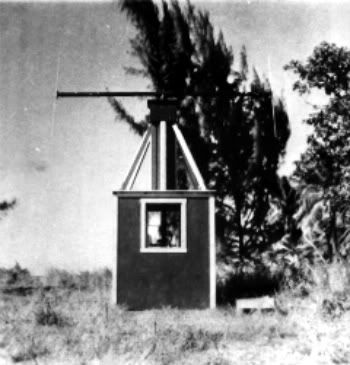 Does anyone have an idea what this could be from? Possibly a metal "chimney" that covered the air shaft above ground? 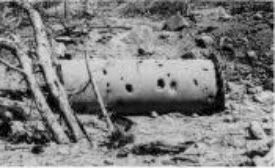 Is it known if the primary source of electrical power for the intercept tunnel was the electrical generation plant in Power Plant Ravine? If so, then I would assume that the diesel inside the tunnel drove a backup generator for emergency power only. 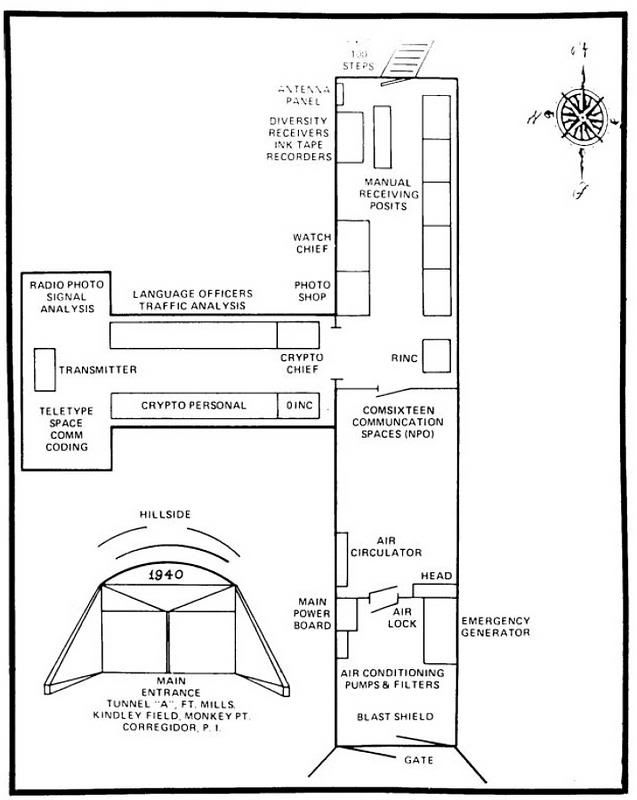 The schematic that fots posted shows a main power board. If the tunnel did receive current from Power Plant Ravine I would expect it arrived here first. The location of the main power board coincides with the location of the emergency generator (which is where the diesel would be). Is it possible that what was mistaken for the "diesel exhaust pipe" was the incoming power lines from Power Plant Ravine?  There are two "rods" as fots pointed out. Could one rod have been routed to the main power board, and the other to a secondary? Or to the air conditioning unit, which would have probably drawn much current, too? I guess before I stick my neck out much further I should ask if cables from the power plant have been found at other installations, and if their size (diameter, AWG) approximates these rods. |
|
|
|
Post by okla on Apr 27, 2011 2:16:45 GMT 8
Hey Chad....You may feel as though you are "sticking your neck out" in conjecturing about these possible power cables, but methinks you are sticking it out in the correct direction. You the man, so keep "sticking". This is a perfectly logical explanation. Good enough for me until something better comes along and I don't see that happening, unless there is some ancient manual or electrical wiring diagram,etc) suddenly appearing. Cheers.
|
|
|
|
Post by okla on Apr 27, 2011 4:24:57 GMT 8
Hey Chad....I can, after an extensive period of zeroing in on the "pink elephant" photo, see what you are saying, but I gotta think, that when this particular photo was taken, anything resembling a rectangular building, would have been knocked flatter than a West Texas/Oklahoma wheat field by shell fire or other type explosions. Just thinkin', which in my advanced state, is rather risky. I do think you are probably correct in regard to the riddled metal tank or chimney like object in the other photograph. It even has, what appears, to be a "bonnet" or shield at it's top. Something to let air in and keep rain water out. Cheers. Ain't this fun?  |
|
|
|
Post by chadhill on Apr 27, 2011 6:13:00 GMT 8
Yes, its been so much fun my wife is starting to kid me about it, too ;D . I just kid back about her Facebook (sound familiar, fots?). Valid point there about rectangular buildings, Okla. I went ahead and enlarged the photo again about as much as I could and still keep it recognizeable, and got this. 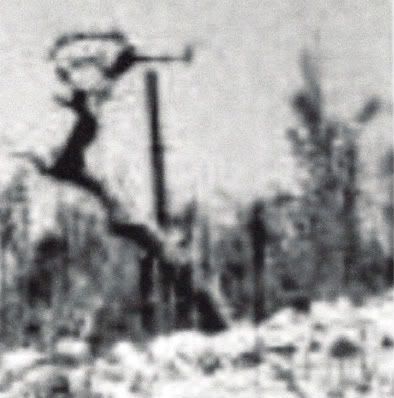 I guess it just amounts to another one of those SWAG's  It could be anything behind that bent tree. Interesting "H" or "T" looking antenna at the top, if it is an antenna. It's happy hour at the local Mexican restaurant, the wife is up for some tacos and me for some 'ritas. Too bad you and yours aren't here to join us. After a few rounds we would have all the mysteries of Corregidor solved. ;D |
|
|
|
Post by okla on Apr 27, 2011 6:34:57 GMT 8
Hey Chad....Sounds great. More riddles solved, but I would venture that more would be created. Cheers.
|
|
|
|
Post by fots2 on Apr 27, 2011 16:03:56 GMT 8
Hi Gents,
I can’t say for sure about the antenna on the hill. As okla says, I don’t think much would still be standing. Perhaps just a fluke branch?
That metal chimney does look like it had a cover. There definitely would have been some sort of cover over the airshaft and other vents.
IF I remember correctly, I read that primary power for the tunnel was elsewhere and became very unreliable after much shelling and bombing. There was definitely a comment that said the generator had to be run continuously after that. It made sleeping in the tunnel difficult.
In my past “working” life, the interconnection of high current power between a source and primary distribution panels was not by wires but by metal bars. (Copper or aluminum these days). They are called “bus bars”. I think chadhill has a quite probable explanation for this bar with two rods. Other parts are necessary for power but who knows what is missing or buried now.
Power and even equipment chassis grounds are important but I can’t imagine a tunnel needing a ground bar up through the roof. This bar had nothing to do with antennas as the drawing shows this function done at the north end of the tunnel.
Okla, if some blueprint shows up someday showing a detailed layout and wiring, us ‘geeks’ will be in heaven.
You two keep the riddles coming.
|
|














